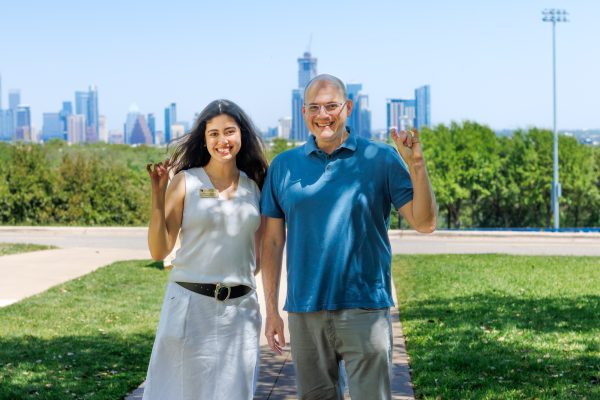National Science Foundation grants university funds for science classes
The National Science Foundation awarded St. Edward’s University a grant of $1.6 million through the Improving Undergraduate STEM Education Program.
The grant will help support improvements in the learning and experience of all first-time science, technology, engineering and mathematics (STEM) majors for at least five years. The grant was also one of 10 expected grants from the program nationwide and the largest ever received by the St. Edward’s from the National Science Foundation (NSF).
The grant, provided by the Improving Undergraduate STEM Education Program (IUSE), fell under the Institutional and Community Transformation: Design and Development track.
The team who put together the proposal consisted of professors Richard Kopec, Jason Callahan, Teresa Bilinski, Tricia Shepherd and Fidelma A. O’Leary. Kopec is the Principal Investigator for this project.
The project evolved from the STEM grant program that began in 2010. Though it was only meant to maintain for one summer, this project has grown enough to support all first year STEM students since then. Due to the success of this program, the grant from the NSF became possible.
The grant will support introductory science and math classes and work to increase student interaction and the learning environment in the classroom. More hands-on experiences and an upgraded curriculum are expected to be added to classes. With these improvements, diversity for student learning will increase and new opportunities will be available to students.
“The main focus of it is actually to put more Active Learning into the teaching of the introductory courses of the sciences,” Shepherd said.
“The overall idea of the grant is to reform both the curriculum in the sciences and, then also, to provide the types of support services for students that really help them succeed in the sciences,” Bilinski said.
Professors hope to increase the interaction between students in the STEM program and build a strong community between them. The current Living Learning Community and pedagogy programs offered are focused on doing this. However, with this grant, the ultimate goal would be to increase these programs to more students and provide more support.
“We know you all tend to work better as a group rather than going off into individual directions,” Kopec said.
A sophomore STEM-based LLC is also a possibility. At this point, the LLC for the STEM students is only available to 24 students. However, professors realize that students in the LLC tend to have better grades due to the support available to them. Because of this, a portion of the grant will help increase student support services to all STEM majors.
“There’s a statistic that 60-70 percent of freshmen going to college, who intend to study a STEM major, change their major or dropout,” Kopec said.
This statistic applies to all incoming STEM students in the United States.
In the SEU community, however, 50 percent of STEM students are fully committed and graduating. With programs such as the LLCs, Kopec hopes to keep this number growing.






